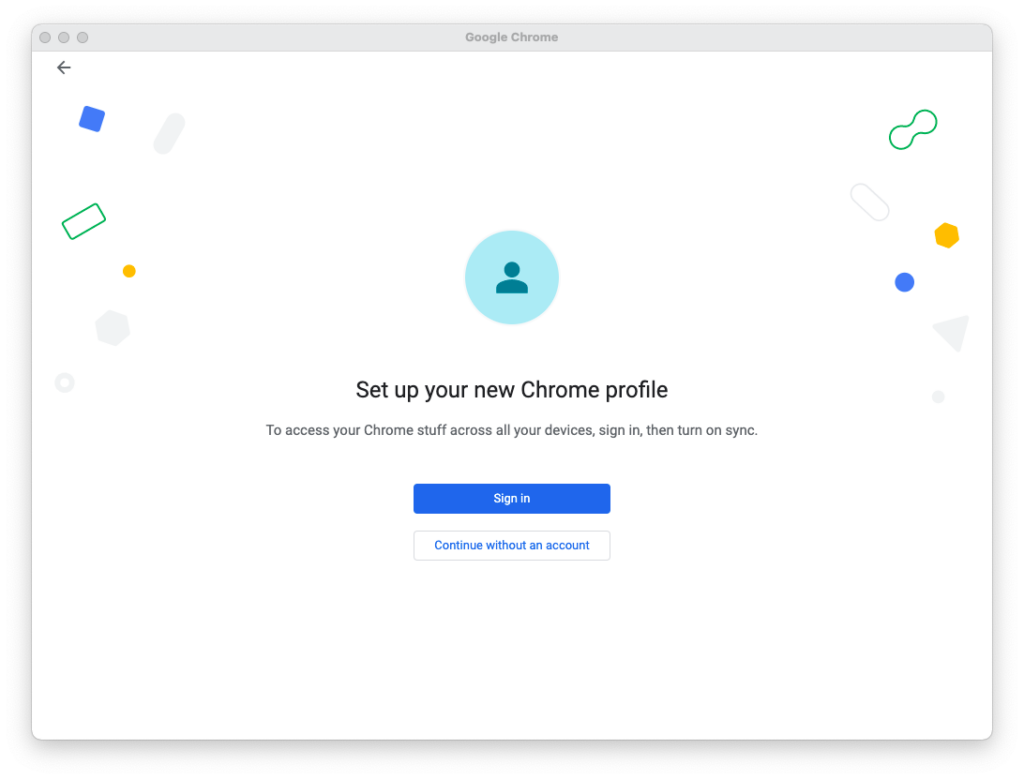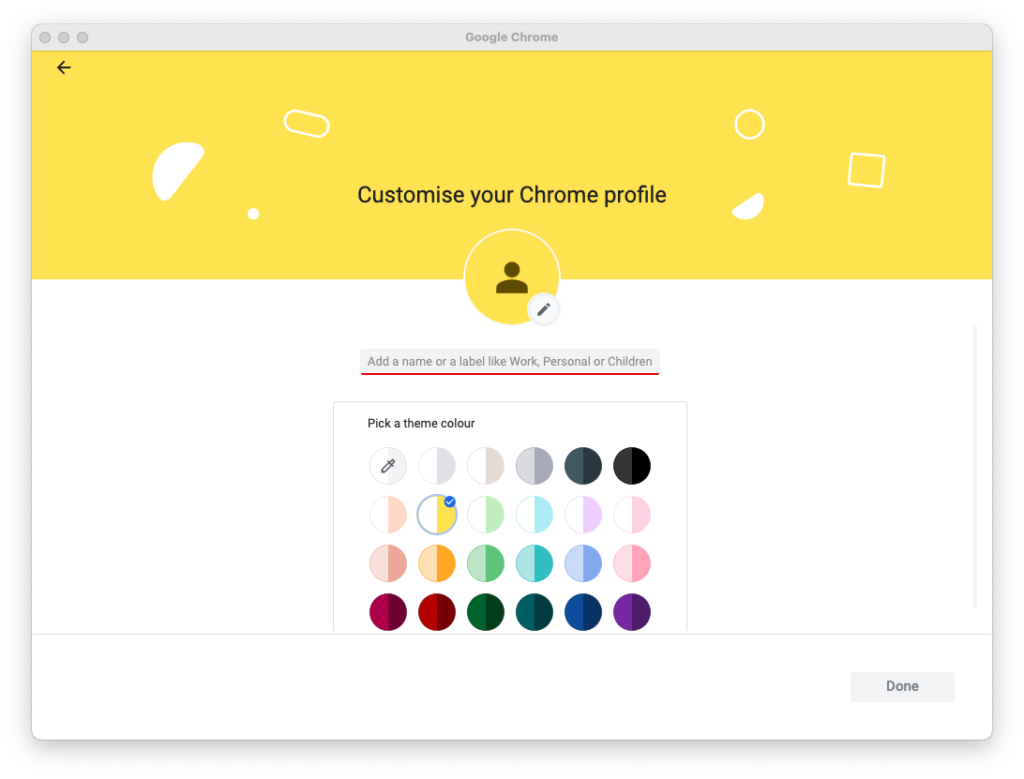If you share the same computer, tablet, or phone with other people in your household, at school, or in the office, Google Chrome has a useful feature that lets each of you use different profiles.
Profiles in Google Chrome allow multiple users of the same browser to keep their browsing history, logins, bookmarks, and settings separate from each other.
With Google Chrome profiles, each user can browse the web without affecting the other’s browsing experience.
Just like you can have multiple users on one computer, and these users can use that computer without interfering with each other’s desktops, settings, and files, Google Chrome lets you have multiple profiles on the same browser.
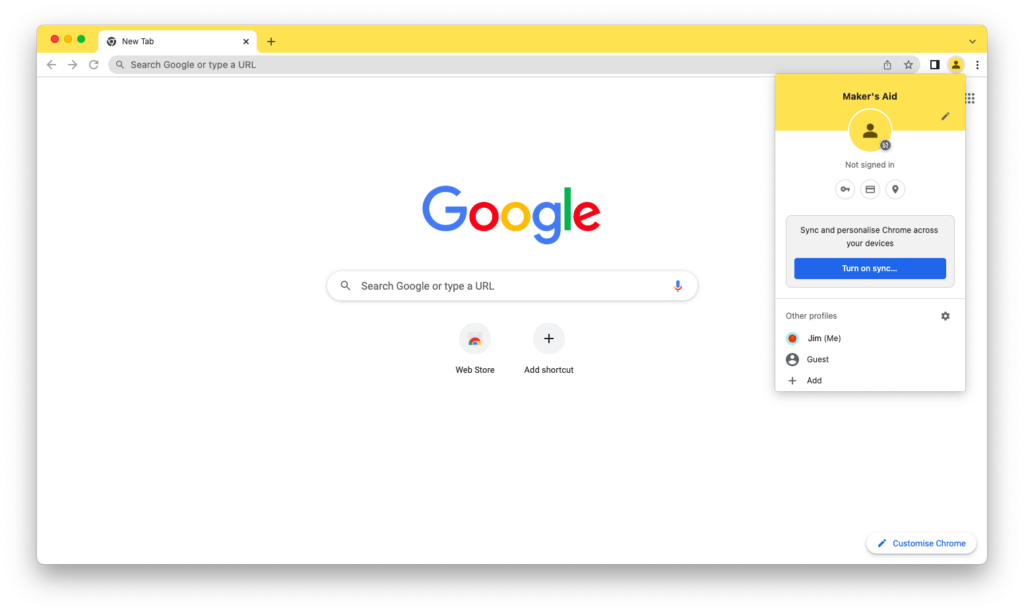
Profiles are stored locally on your computer. However, you can connect your Google Chrome profile to your Google account so it syncs your browsing experience across devices.
How Do I Create a Profile in Google Chrome?
To create a new profile in Google Chrome, click on the profile picture in the upper right corner of the browser window, select “+ Add” and then complete your profile.
If you’re not quite sure how to do this, follow the step-by-step instructions below:
Step 1: Click on the profile icon in the upper right corner of the browser window.
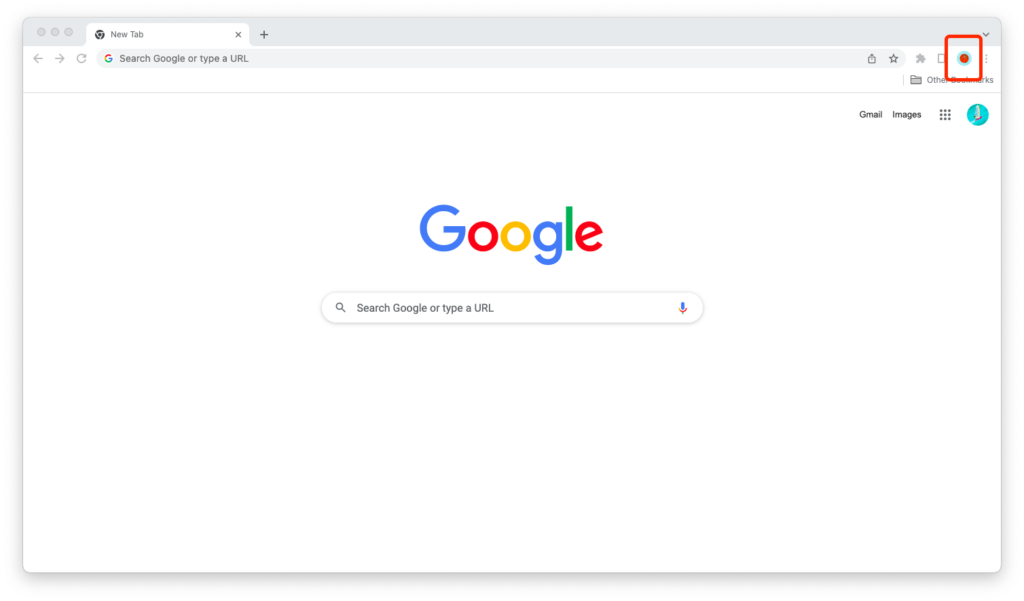
Step 2: Click “+ Add” from the menu that pops up.
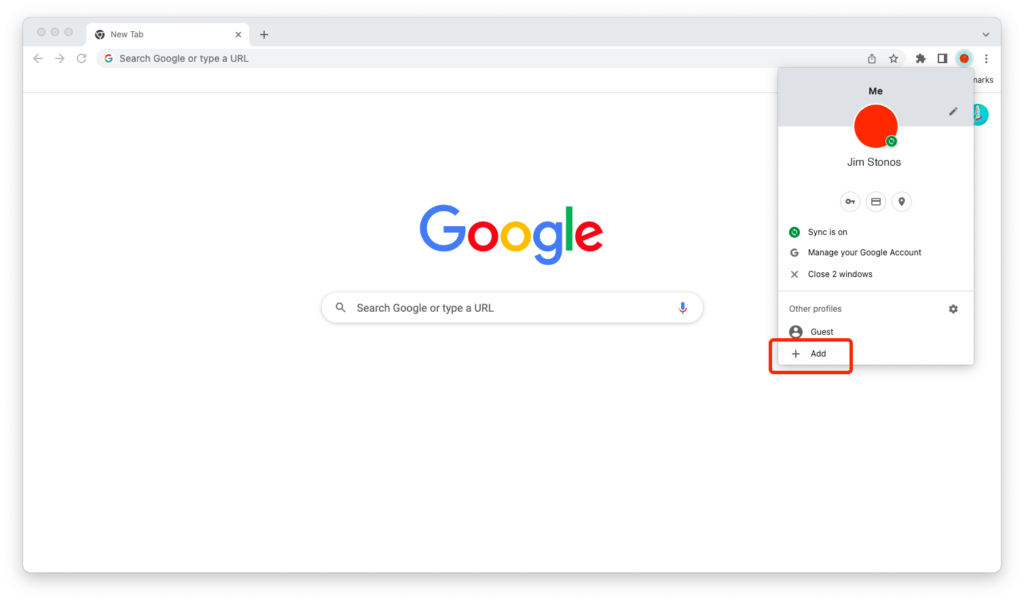
Step 3: Choose whether you want to create a profile and sign in to your Google account with it or continue without a Google account and create a local profile. (If you don’t know what this means, read on; I’ll explain the difference in a moment.)
Step 4: Customize your Google profile. When you’re done, click the “Done” button in the bottom right corner.
You’re all set!
You’ve just created a Google profile that you can switch to whenever you need.
How to Switch Between Google Chrome Profiles
To switch between profiles in Google Chrome, click on the profile picture in the upper right corner of the browser window, then select the profile you want to switch to.
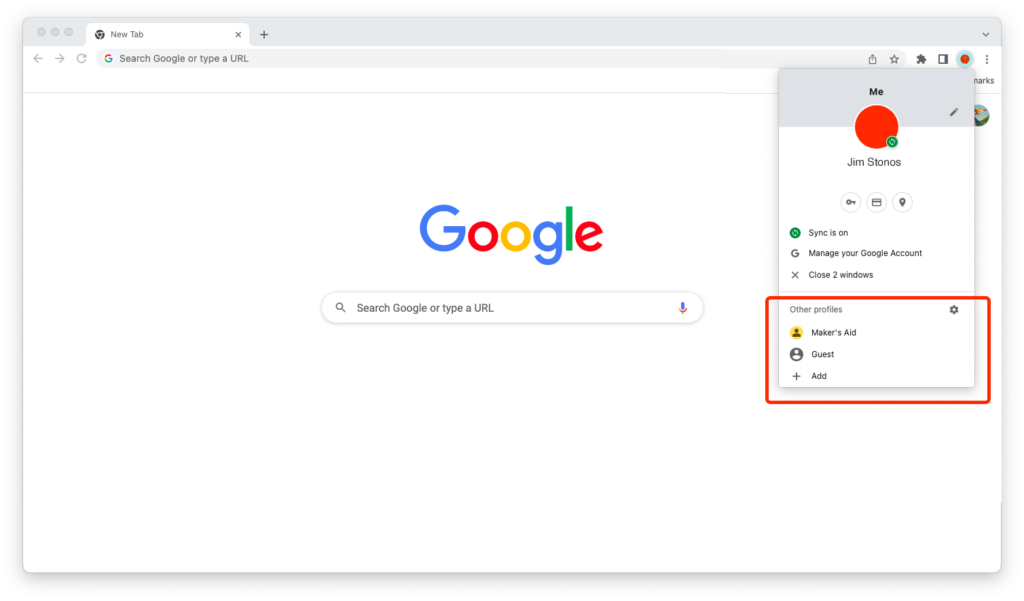
Google Account vs. Google Chrome Profile (The Difference)
First time you heard about Google Chrome profiles, huh?
If it is, you’re probably wondering about the difference between a Google Chrome profile and a Google account. I know I was! So here’s everything you need to know.
A Google account lets you access and use Google’s services, such as Gmail, YouTube, and Google Docs. A Google Chrome profile is only for the Google Chrome browser. It holds your browsing history, bookmarks, logins, and settings.
You don’t need to have a Google account to create a Google Chrome profile. However, you can link your Chrome profile to your Google account so it syncs your browsing history, bookmarks, logins, and settings across all your devices.
Whether to do it or not comes down to what you value more: convenience or privacy.
Some people, me included, appreciate the convenience of cross-device synchronization because they can switch between stationary, laptop, and tablet or phone without having to log in again or remember the websites they visited.
Others, including some people I know, prefer to keep their data local and are okay with trading off the convenience of cross-device sync for the privacy of not uploading their browsing data to the cloud.
Google Chrome Profile vs. Guest Mode
Google Chrome has something called Guest Mode.
To open Guest Mode, click on the profile icon in the upper right corner of the browser window, then click on “Guest” under “Other profiles.”
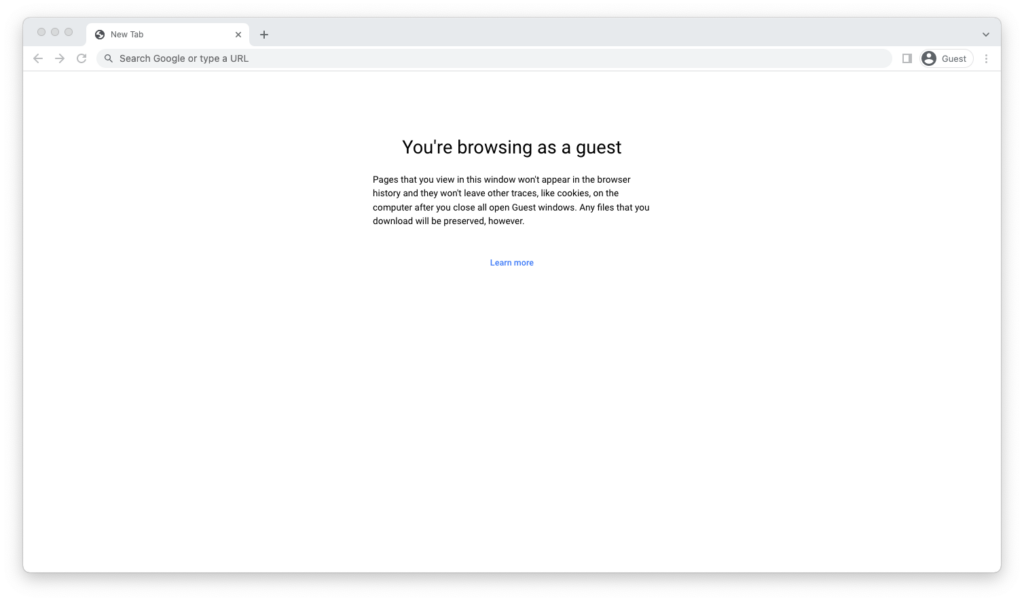
When you browse the web as a Guest in Google Chrome, the pages you look at won’t be stored in your browsing history and all cookies will be deleted after you close the Guest Mode window. Any downloaded files, however, will be preserved.
As the feature’s name suggests, Guest Mode is useful when you have a guest over and they want to browse the Internet for a brief moment. If you share the same device with others, Google Chrome profiles are a much better alternative.
What’s the Point of Profiles in Google Chrome?
Struggling to figure out the point of Google Chrome profiles? Let’s take a look at a few examples that might help.
Say that you and your partner live together. You have one stationary computer on the desk—and both of you use it mostly for browsing the web.
Instead of having to set up two different user accounts for the computer and keeping everything separate, each of you can have your own Google Chrome profile through your Google accounts.
This way, it takes less time to switch from one profile to another. Once you switch to your account, Google Chrome will automatically load all your browsing history, bookmarks, and logins.
So, for example, you no longer have to keep logging in and out of your Gmail account for both of you to be able to check your email inbox. (The same applies to all other sites and services that you use, as well as to the cards saved in Google Pay.)
But you don’t even need to share the same computer with somebody else to take advantage of Google Chrome’s profiles.
If you’re a digital nomad, for example, you probably use the same laptop for work and play.
And when you work, you probably use different sites and services than when you use the laptop for leisure. You might even have a separate Google account with your company’s email address.
In such a case, you can have two Google Chrome profiles for yourself. One for your personal time and the other for your business hours. This way, all your logins and settings will be kept separate—and you won’t have to worry about mixing play and work.


